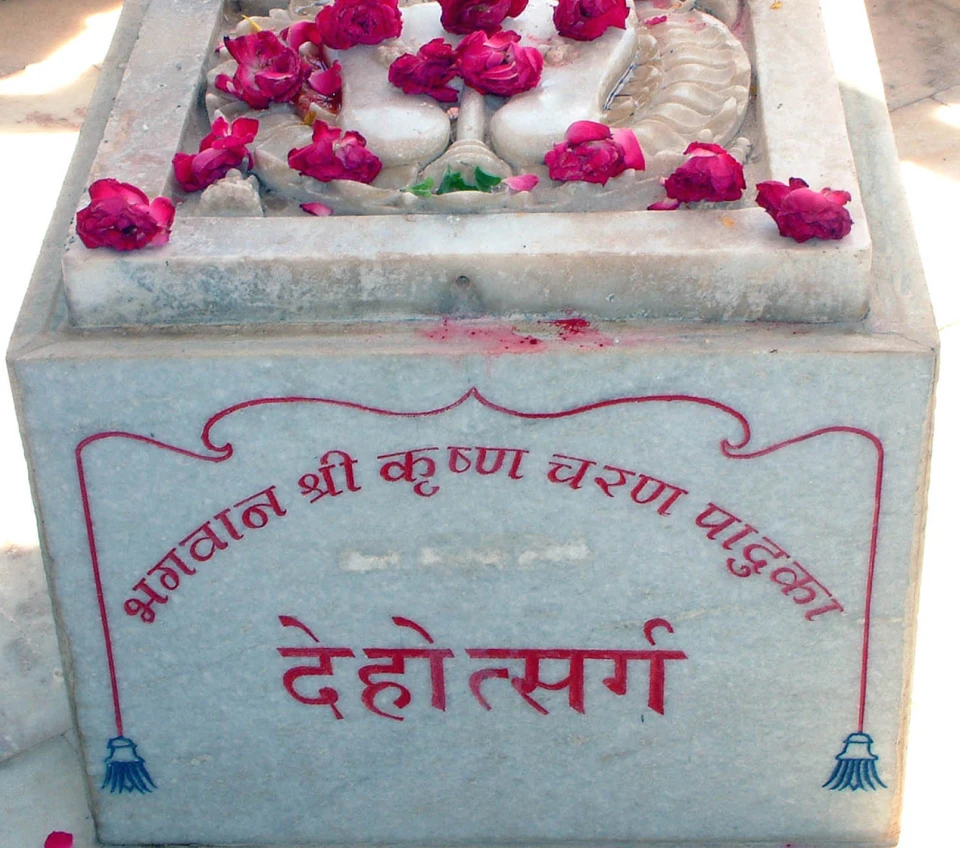Prabhas Kshetra
Prabhas is a Sanskrit word formed in by two words “prabha” means glory or shining and “s” means the place belongs to, thus uniting two words makes new word called prabhas means the place where glory exists or remains.
History
The recent excavations conducted by the Archaeological Department near the new Somnath Temple, Sun Temple, and Triveni Sangam have unearthed a wealth of artifacts including coins, bones, vessels, crafted stones, and pots. These findings provide compelling evidence of the prehistoric nature of Prabhas. Today, Prabhas stands as a twin city, united with the port city of Veraval. Around two millennia ago, Veraval port held significant importance as a crucial hub for foreign trade, connecting regions such as Egypt and Lebanon in the Middle East. The excavation reports substantiate this historical fact, and even history books from the Middle East corroborate this view. The archaeological discoveries and historical records combine to paint a vivid picture of Prabhas and its rich historical legacy as a prominent center of trade and cultural exchange.
पञ्चनद्यः सरस्वती मपियन्ति सस्त्त्रोतसः।
सरस्वतीतु पञ्चधासो देशे भवत्सरितः ।।
Social economical value of Prabhas
Prabhas thrived as a prosperous city due to its extensive trade connections with the Middle East and Far East. The city's richness stemmed from various factors, including its significance as a pilgrimage site that attracted kings from all over India. As the practice of idol worship gained prominence, temples were constructed, marking Prabhas as a prominent hub for cultural and religious activities.
Over the years, Prabhas garnered fame for its prosperity, with its involvement in the Silk Route and its association with the Vedic Saraswati civilization. Its rich cultural and religious heritage made it an attractive target for non-believers of idol worship, leading to several brutal invasions, particularly in the 15th century. In the 10th century, Prabhas experienced a devastating episode of looting and mass killings.
Historians such as Al Biruni and others witnessed the harrowing massacres and chronicled them in their history books. These accounts serve as a painful reminder of the destructive forces that ravaged Prabhas, tarnishing its once-flourishing prosperity.
Prabhas is classified into five main categories, namely मुल प्रभास - आदित्य प्रभास - जल प्रभास - व्रृद्ध प्रभास - महा प्रभास or क्रृतोस्मर प्रभास (also known as Kritosmar Prabhas). Additionally, two other Prabhas locations are mentioned: आदि प्रभास - स्थल प्रभास and स्थल प्रभास These various Prabhas sites can be likened to the concept of Panch Kedar or Panch Prayag, signifying their significance in Hindu mythology.
However, it is important to note that these five or seven Prabhas sites are not separate entities but rather part of a larger circular region known as the Rudra Mandala. The Rudra Mandala encompasses an area of approximately six yojanas, with each yojana measuring around 8 kilometers in the Vedic distance system. Prabhas itself spans across 12 yojanas in each cardinal direction (east, west, north, and south) resulting in a total radius of 12 square yojanas.
This description highlights the interconnectedness of the various Prabhas locations within the Rudra Mandala, emphasizing their collective importance as sacred pilgrimage sites within a defined geographical area.
Sacred pilgrimage place
Prabhas has been revered as a sacred pilgrimage site since
the Vedic era as mentioned in
शुक्ल यजुर्वेद, अध्याय ३४, मंत्र 11
पञ्चनद्यः सरस्वती मपियन्ति सस्त्त्रोतसः।
सरस्वतीतु पञ्चधासो देशे भवत्सरितः ।।
In Prabhas, the convergence of five rivers occurs, with the main stream holding prominence. Four additional rivers (Hiranya, Vrajani, Nyanku, Kapila) merge with the Sarasvati River in Prabhas, collectively known as the Panch Strota Sarasvati.
ऋग्वेदः, सूक्त 20, श्लोक ५
यत्र गंगा च यमुना च यत्र प्राची सरस्वती
यत्र सोमेश्वरो देव स्तत्र मामम्रृतं क्रृधी।
The presence of the river Ganga or Yamuna, Lord Somanath, and the holy river Sarasvati signifies the abundant blessings found in Prabhas. Through two Vedic references, we can comprehend the immense value of Prabhas, as the Vedas are regarded as unquestionably authentic creations authored by God.
Prabhas holds 18 main puranas references recognize as a sacred pilgrimage place

Yadnyavalkya
In Prabhas, the sage Yadnyavalkya undertook rigorous penance to Lord Sun and received profound knowledge of the Shukla Yajurveda directly from him. This significant event highlights Prabhas as a sacred place where spiritual wisdom and divine teachings were imparted by Lord Sun to the dedicated sage Yadnyavalkya.

Vaisheshika Sutras
On the banks of the Sarasvati River in Prabhas. The sage Kaṇāda made a remarkable discovery. He formulated the Vaisheshika Sutras, which introduced the theory of atoms. This profound contribution to philosophical and scientific thought highlights the significance of Prabhas as a place where great sages and scholars delved into deep contemplation and made groundbreaking intellectual advancements. The discovery of the Vaisheshika Sutras by Sage Kaṇāda further enhances the historical and intellectual value associated with Prabhas.

Shree Krishna Visits
Prabhas is abundantly mentioned in the Srimad Bhagavat Puran, with several references emphasizing its significance. One notable incident involves Lord Krishna during his Gurukul days when he visited Prabhas to retrieve his Guru’s son from the ocean. This event showcases Prabhas as a pivotal location in Lord Krishna's divine adventures and underlines its importance in the narratives of Hindu shastra.

Shree Parshuram Penanced
The word "Guru" in Sanskrit means "teacher" or "spiritual guide," and "Purnima" refers to the full moon day. Therefore, Guru Purnima is a day dedicated to honouring the role of the guru in one's life and paying respects to them.
It is a traditional Hindu festival celebrated to honor and express gratitude towards spiritual teachers, mentors, and gurus.

Agni Puran
According to scholars, The Agni Puran, one of the oldest Puranas, designates Prabhas as the "तीर्थराज" or the king of pilgrimage places.
In अध्याय 15, श्लोक 4 of the Agni Puran, this esteemed title is bestowed upon Prabhas, underscoring its preeminent status among all the sacred tirthas, and also full of divinity.

Lord Vishnu Penace
In addition to the remarkable events mentioned earlier, Prabhas holds significance as a site of penance for the sixth incarnation of Lord Vishnu, Parshuramji. The illustrious Parshuramji chose Prabhas as the place to undertake rigorous penance, further adding to the sacredness and spiritual aura of Prabhas.
As per Brahma Vaivarta Purana, verse 2-6/9
स्कन्द पुराण
यादवानां भारकरं वज्रं राज्येऽभ्यषेचयन्।
देवादेशात् प्रभासे स देहं त्यक्त्वा स्वयं हरिः।।
During the tumultuous period of the Yadavas, a powerful curse, likened to a vajra (thunderbolt), weighed heavily upon them. To alleviate the burden and release the distress caused by this curse, Lord Krishna, also known as Hari, made the decision to detach his mortal body. This significant event occurred in Prabhas, where Lord Krishna chose to embark on his final journey. It exemplifies the pinnacle of Prabhas's religious significance during the era of the Mahabharata, as Lord Krishna himself sought ultimate liberation, salvation, or moksha for his dynasty by going to Prabhas. This episode showcases the profound spiritual aura and significance that Prabhas held during that time.
ब्रह्म वैवर्त पुराण, अध्याय २, श्लोक ६/९
नित्यं सरस्वती तोयं यःस्नात्वा मुण्डयेन्नरः
न गर्भवासं कुरुते पुनरेव न मानवः
According to the Brahma Vaivarta Purana, verse 2-6/9, one who regularly takes a holy bath in the waters of the Sarasvati River and shaves their head will not experience the pain of residing in the womb (garbhavasam) and will attain the ultimate liberation, known as moksha.
References of prabhas in other main puranas
ब्रह्माण्ड पुराण
वायु पुराण, अध्याय 83, श्लोक 117/18/20
मत्स्य पुराण, अध्याय 5, श्लोक 21. अध्याय 19, श्लोक 5/6/7/8/9. अध्याय 22, श्लोक 29. अध्याय 109, श्लोक 2.
भविष्य पुराण, अध्याय 69
गरूड पुराण, अध्याय 81, श्लोक 86
न्रृसिंह पुराण, अध्याय 16, श्लोक 5
बनारद पुराण, अध्याय 11, श्लोक 8
विष्णुु पुराण, अध्याय 37
कुर्म पुराण, अध्याय 34
 Sompura Brahmins, in Skanda Puran refers as Agnihotri Brahmins of Soma Loka, on request of their king moon came to Prabhas to perform pratishtha yagya of worshipped god named Somnath, later on request of lord moon the Agnihotri Brahmins decided to stay in Prabhas and perform all rituals for devotees, since the days the Brahmins are known as Sompura.
Sompura Brahmins, in Skanda Puran refers as Agnihotri Brahmins of Soma Loka, on request of their king moon came to Prabhas to perform pratishtha yagya of worshipped god named Somnath, later on request of lord moon the Agnihotri Brahmins decided to stay in Prabhas and perform all rituals for devotees, since the days the Brahmins are known as Sompura.©2025 सोमपुरा ब्राह्मण तीर्थ पुरोहित सोमनाथ (SBTPS). All rights reserved. | Design and Developed by bScale.